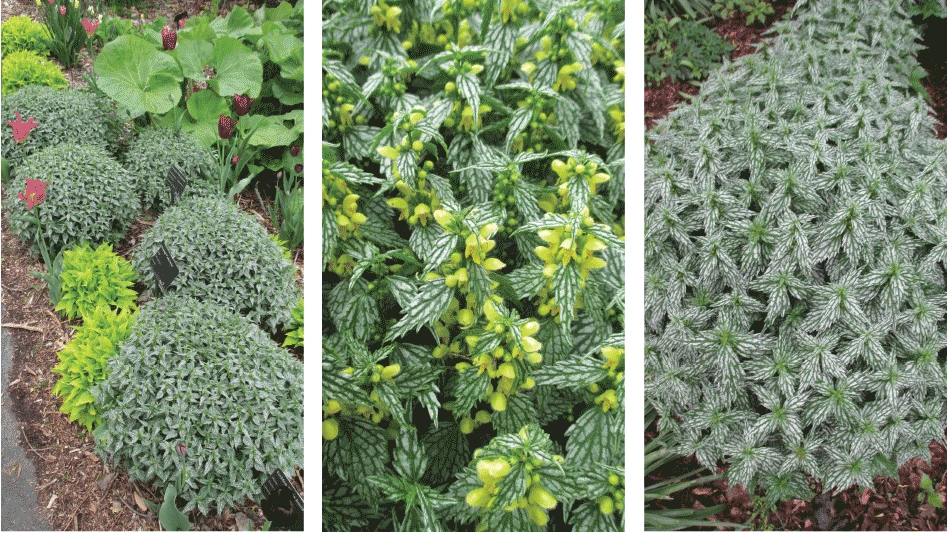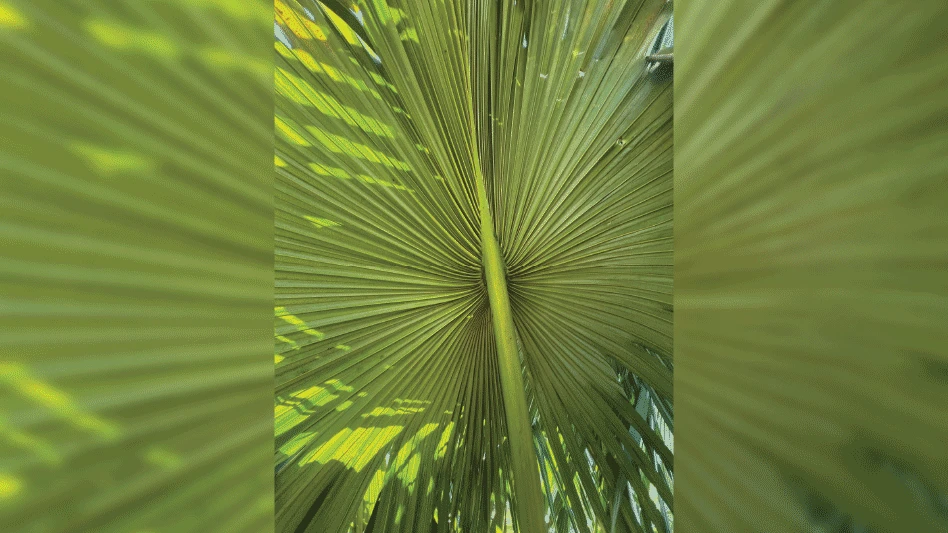 Liners are a common source of weeds. In this photo, mulberry weed (Fatoua villosa) is hitching a ride in this cryptomeria liner. Liners are a common source of weeds. In this photo, mulberry weed (Fatoua villosa) is hitching a ride in this cryptomeria liner. |
Spring should be shipping season for growers, yet throughout the country overwintering houses are opened to reveal a truly remarkable crop of weeds. These weeds will need to be removed for many reasons, but one of the more serious reasons is to protect newly potted crops from infestations. Sanitation is an under-appreciated, yet vital link in nursery weed management planning. A sanitation plan will include controlling weeds in non-production areas (roadways and around bark and pot storage) as well as in production.
The principle of nursery weed sanitation is simple—control the weeds before they can go to seed. Easy to say, harder to do. Nursery weeds have fascinating adaptations for seed dispersal including ballistic dehiscence, wind dispersal and water dispersal.
Well known to growers are the forceful seed dispersal mechanisms of woodsorrel and bittercress. Bittercress seeds are dispersed up to 6 feet from the parent plant, and woodsorrel seeds have been documented to disperse seeds nearly 5 feet. But I have observed evidence of dispersal of up to 10 feet. Perhaps not as well known is that spurge and phyllanthus seeds can be dispersed several feet from the “mother” plant. Seeds of many weeds in the aster family have a feathery papus that facilitates dispersal by wind and water. Distance of travel depends on wind speed and direction, but the majority of the wind-dispersed seeds will travel relatively short distances—from your fence row to your crop, for example.
Beyond production
Consequently, it is important to control weeds in non-crop areas around the nursery. While spot spraying with non-selective herbicides (such as glyphosate, glufosinate or paraquat) is commonplace, it is advisable to treat the areas around production beds with a residual herbicide to prevent weed establishment. Any nursery herbicide may be used in these sites, and preemergence herbicides that have performed well in gravel, non-crop areas of the nursery include SureGuard (flumioxazin) and Barricade (prodiamine). In my research, these herbicides have worked equally well on common nursery weeds such as spurge and bittercress. If tougher-to-control weeds are present, select the most effective herbicide for the target weed species. For example: where groundsel, phyllanthus or doveweed are common, flumioxazin will typically provide more satisfactory control. Where sedges are common, Tower (dimethenamid-p) may be a better choice. I’m often asked when to re-treat. The longevity of weed control in these areas will vary with local weather patterns, irrigation overlap, and the amount of soil present in the gravel. So, when to re-apply the preemergence herbicide is a site-specific decision. Spot treat emerged weeds with a non-selective herbicide before they go to seed. When these spot treatments become more and more necessary, it is time for management to decide if another preemergence herbicide application is warranted.
 Bittercress seed pods burst open to send seed up to 6 feet from the mother plant. Bittercress seed pods burst open to send seed up to 6 feet from the mother plant. |
Sanitation tips
Because we use bark-based potting substrates, the perception is that crops generally start out weed free. In a perfect world, this would be correct. But since this is not a perfect world, here are some sanitation tips that will reduce weeds in your crops.
- Control weeds around potting substrate and pot storage areas.
- Inspect new shipments of liners before potting. If you observe weeds that are not currently present at your nursery you have two choices — (1) refuse the shipment or (2) remove the top ½-inch of potting media from the liners and dispose of that contaminated media. Do this before plants enter the potting area.
- Closely monitor new plants in the nursery to prevent introduced weeds from going to seed.
- Scout newly planted nursery blocks in early spring—after weeds have had a chance to emerge—to identify new weed infestations before they become established and spread.
- Cull containers from the nursery that are infested with perennial weeds.
- After hand weeding containers, remove the weeds from the property.
- Recycled potting media tends to be loaded with weeds. Use it only in crops on which you can use broad-spectrum herbicides.
Sanitation practices provide a solid foundation for preemergence herbicide programs to be even more effective. Nurseries that have adopted a systematic emphasis on sanitation have reported significant cost savings in the form of reduced hand-weeding costs. After a couple of years on such an intense program, several nurseries experienced weed populations so low that they have actually reduced the number of preemergence herbicide applications. Sanitation practices are not only good for your nursery crops, they are good for your bottom line.
 Controlling weeds in gravel areas around the nursery will reduce weeds in your crops. Controlling weeds in gravel areas around the nursery will reduce weeds in your crops. |
Joseph C. Neal is professor of weed science, Department of Horticultural Science, North Carolina State University; joe_neal@ncsu.edu.

Explore the April 2012 Issue
Check out more from this issue and find your next story to read.
Latest from Nursery Management
- NewGen Boxwood added to Proven Winners ColorChoice line
- Terra Nova releases new echinacea variety, 'Fringe Festival'
- American Horticultural Society names winners of 2025 AHS Book Awards
- Nufarm announces unified brand
- American Horticultural Society announces winners of 2025 Great American Gardeners Awards
- Shifting the urban environment
- The Growth Industry Episode 3: Across the Pond with Neville Stein
- What's in a name?






